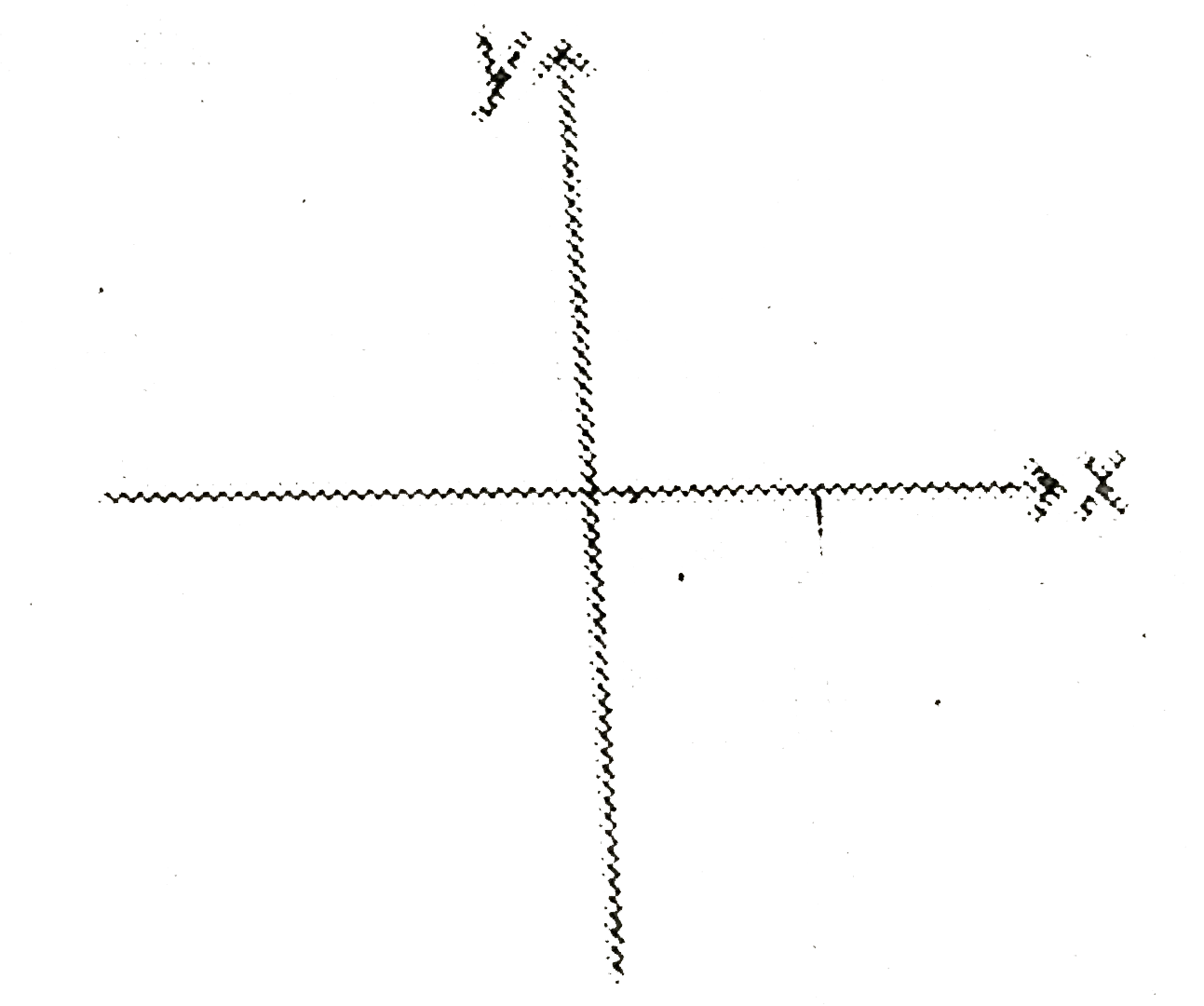A particle is performing S.H.M with accerlration a=8π2−4π2x where x is coordinate of the particle w.r.t the origin. The parameters are in S.I. units. The particle is at rest at x=−2 at t=0.
coordinate of the particle w.r.t origin at any time t is 2−4cos2πt
coordinate of the particle w.r.t origin at any time t is −2+4sin2πt
coordinate of the particle w.r.t origin at any time t is −4+2cos2πt
the coordinate cannot be found because mas of the particle is not given.
The correct Answer is:A
To solve the problem step by step, we will analyze the given acceleration equation and use the information provided about the particle's motion.
Step 1: Write down the acceleration equation
The acceleration a of the particle is given by:
a=8π2−4π2x
Step 2: Relate acceleration to velocity
We know that acceleration can also be expressed in terms of velocity v and position x:
a=vdvdx
Thus, we can equate the two expressions for acceleration:
vdvdx=8π2−4π2x
Step 3: Separate variables
We can rearrange the equation to separate the variables:
vdv=(8π2−4π2x)dx
Step 4: Integrate both sides
Now we will integrate both sides:
∫vdv=∫(8π2−4π2x)dx
This gives us:
v22=8π2x−2π2x2+C
where C is the constant of integration.
Step 5: Solve for the constant of integration
We know that the particle is at rest at x=−2 when t=0. This means that v=0 at x=−2. Substituting these values into the equation:
0=8π2(−2)−2π2(−2)2+C
Calculating this gives:
0=−16π2−8π2+C⟹C=24π2
Step 6: Substitute back to find the velocity equation
Now substituting C back into the equation:
v22=8π2x−2π2x2+24π2
Multiplying through by 2 gives:
v2=16π2x−4π2x2+48π2
Step 7: Express velocity in terms of x
We can factor out 4π2:
v2=4π2(4x−x2+12)
Taking the square root gives:
v=2π√4x−x2+12
Step 8: Relate velocity to time
Since v=dxdt, we can write:
dxdt=2π√4x−x2+12
Step 9: Separate variables again
Rearranging gives:
dx√4x−x2+12=2πdt
Step 10: Integrate both sides again
Now we will integrate both sides:
∫dx√4x−x2+12=∫2πdt
This integral can be simplified by completing the square in the expression under the square root.
Step 11: Solve the integral
Completing the square for 4x−x2+12:
4x−x2+12=−(x2−4x−12)=−((x−2)2−16)=16−(x−2)2
Thus:
∫dx√16−(x−2)2=2πt+C
This integral results in:
sin−1(x−24)=2πt+C
Step 12: Find the constant C
At t=0, x=−2:
sin−1(−2−24)=C⟹sin−1(−1)=−π2⟹C=−π2
Step 13: Final equation for x
Substituting C back gives:
sin−1(x−24)=2πt−π2
Taking the sine of both sides:
x−24=sin(2πt−π2)=−cos(2πt)
Thus:
x−2=−4cos(2πt)⟹x=−4cos(2πt)+2
Final Answer
The position of the particle as a function of time is:
x(t)=2−4cos(2πt)
The acceleration a of the particle is given by:
a=8π2−4π2x
We know that acceleration can also be expressed in terms of velocity v and position x:
a=vdvdx
Thus, we can equate the two expressions for acceleration:
vdvdx=8π2−4π2x
We can rearrange the equation to separate the variables:
vdv=(8π2−4π2x)dx
Now we will integrate both sides:
∫vdv=∫(8π2−4π2x)dx
This gives us:
v22=8π2x−2π2x2+C
where C is the constant of integration.
We know that the particle is at rest at x=−2 when t=0. This means that v=0 at x=−2. Substituting these values into the equation:
0=8π2(−2)−2π2(−2)2+C
Calculating this gives:
0=−16π2−8π2+C⟹C=24π2
Now substituting C back into the equation:
v22=8π2x−2π2x2+24π2
Multiplying through by 2 gives:
v2=16π2x−4π2x2+48π2
We can factor out 4π2:
v2=4π2(4x−x2+12)
Taking the square root gives:
v=2π√4x−x2+12
Since v=dxdt, we can write:
dxdt=2π√4x−x2+12
Rearranging gives:
dx√4x−x2+12=2πdt
Now we will integrate both sides:
∫dx√4x−x2+12=∫2πdt
This integral can be simplified by completing the square in the expression under the square root.
Completing the square for 4x−x2+12:
4x−x2+12=−(x2−4x−12)=−((x−2)2−16)=16−(x−2)2
Thus:
∫dx√16−(x−2)2=2πt+C
This integral results in:
sin−1(x−24)=2πt+C
At t=0, x=−2:
sin−1(−2−24)=C⟹sin−1(−1)=−π2⟹C=−π2
Substituting C back gives:
sin−1(x−24)=2πt−π2
Taking the sine of both sides:
x−24=sin(2πt−π2)=−cos(2πt)
Thus:
x−2=−4cos(2πt)⟹x=−4cos(2πt)+2
The position of the particle as a function of time is:
x(t)=2−4cos(2πt)
Topper's Solved these Questions
- SIMPLE HARMONIC MOTIONBook:ALLENChapter:SIMPLE HARMONIC MOTIONExercise:Exercise-02
Explore 19 Videos
- SIMPLE HARMONIC MOTIONBook:ALLENChapter:SIMPLE HARMONIC MOTIONExercise:Exercise- 3 Match The Column
Explore 1 Video
- SIMPLE HARMONIC MOTIONBook:ALLENChapter:SIMPLE HARMONIC MOTIONExercise:SOME WORKED OUT EXAMPLES
Explore 29 Videos
- RACEBook:ALLENChapter:RACEExercise:Basic Maths (Wave Motion & Dopplers Effect) (Stationary waves & doppler effect, beats)
Explore 24 Videos
- TEST PAPERBook:ALLENChapter:TEST PAPERExercise:PHYSICS
Explore 4 Videos
Similar Questions
A particle is performing SHM according to the equation x=(3cm)sin(2πt18+π6), where t is in seconds. The distance travelled by the particle in 39 s is
View SolutionThe coordinates of a particle moving in XY-plane very with time as x=4t2,y=2t. The locus of the particle is
View SolutionA particle starts from rest and moves with an acceleration of a={2+|t−2|}m/s2 The velocity of the particle at t=4 sec is
View SolutionA particle starts from rest and moves with an acceleration of a={2+|t−2|}m/s2 The velocity of the particle at t=4 sec is
View SolutionA particle is moving along the x-axis whose acceleration is given by a=3x−4, where x is the location of the particle. At t = 0, the particle is at rest at x=4/3m. The distance travelled by the particles in 5 s is
View SolutionThe coordinates of a particle moving in XY-plane vary with time as x=4t2,y=2t. The locus of the particle is a : -
View SolutionA particle is performing SHM along x-axis such that its acceleration along x-axis is : a=2−x where a is in m/s2 and x is in meter. If speed of the particle at x = 1 is zero in INCORRECT statement is :
View SolutionA particle starts from rest with a time varying acceleration a=(2t−4). Here t is in second and a in m/s2
The velocity time graph of the particle is
View SolutionA xandy co-ordinates of a particle are x=Asin(ωt)andy=Asin(ωt+π/2). Then, the motion of the particle is

View SolutionA particle executes SHM according to the equation, y=4sin(πt+π3),where y is in m and t is in's '.The phase of particle at time t=0 is
View Solution